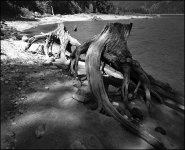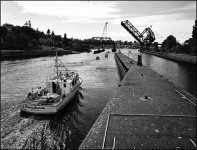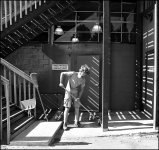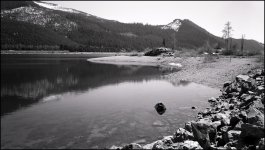venchka said:
So, in 25 words or less, for the push/pull challenged, you're saying that I can:
1. Load a camera with Ilford XP2 Super.
2. Set my meters anywhere between 200 & 800 for any given frame.
3. Grin when I see the negatives.
Ilford is saying that the film has +1 to -1 exposure latitude. That's cool.
I'm going to try this with my next roll. The 800 part should work nicely with my 2.5 to 2.8 lenses for pub shooting. 😀
Cheers!
More or less, yes.
🙂
However...your best post-shoot results will come about if:
- you do all the post-shoot stuff yourself (either wet darkroom or digitally), or
- you have a lab you
really know and trust handle everything
This is important. Most labs, even the decent ones, are set up to deal with color neg film. If you're expecting a given lab to do the printing as well as the film developing, you
must communicate, in no uncertain terms, what you're expecting in those prints, and not assume they'll "figure it out". If I had a $10 bill for every time I've handed over a roll of XP2 to a small or non-pro lab, only to have it handed back with the comment "we only handle color neg film here, we'd ruin the chemicals running this", I'd have the down-payment on an M8 (almost). This is why I have labs just run the film (
any neg film, not just chromogenic) through the machine and hand it straight back to me, uncut abd unprinted...I won't trust them an inch more than that. As long as the machine is kept clean and running reasonably within spec, I'm safe (and you should be, too).
- Barrett






